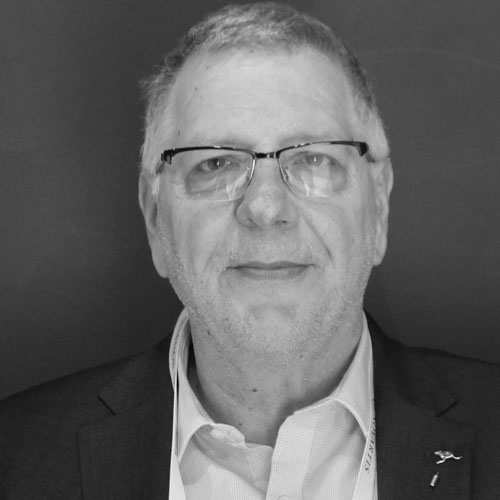
Two major issues in global dermatology – Access to care and misinformation
Dominique du Crest (France)
There is a great untapped potential in the field of dermatology. Skin disease is the fourth most common cause of human illness, with around 3,000 different skin pathologies. One third of the world population has been affected by at least one skin disease, while a recent survey shows that 48% of the European adult population declared at least one dermatological condition.
Despite these findings, access to dermatology care remains sub-optimal and it is estimated that more than 70% of people affected by a skin disease do not consult a physician. Although elective, access to aesthetic procedures remains underdeveloped and it is estimated that less than 9% of women (25-55 years old) in the United States and less than 1% in urban China have access to injectable procedures.
Moreover, skin-related misinformation plagues the internet and 65% of the content shared on social networks (Facebook, Pinterest, Twitter, and Reddit) about dermatology is imprecise and generates confusion.
Although the risk of a digital divide remains, advances in digital technology and artificial intelligence can help improve access to care, as well as combat misinformation. The integration of digital technologies is opening up new opportunities to improve access to dermatology and better informing patients about their dermatological health while coping with the dearth of dermatologists.
With numerous skin-centric digital start-ups being launched such as Google’s soon to be launched “Derm Assist”, in addition to TikTok, Reddit and Instagram increasingly influencing the skin business, it’s of prime importance for dermatologists to be aware of this new dynamic.
A recent JEADV article states that, “it is vital for dermatologists to increase their social media presence to disseminate evidence-based information and to counter any misleading posts.” As such, dermatologists are needed on social media. Non-promotional social media is a way forward for dermatologists to engage with their audience beyond personal or commercial posting.


Artificial intelligence in dermatology: Smartphone applications
Tobias Sangers (Netherlands)
With over 6.4 billion smartphone users globally in 2020, mobile health (mHealth) smartphone applications (apps) have the potential to reach nearly 80% of the global population.
Artificial intelligence (AI) based algorithms, which have been reported to be highly accurate in detecting skin cancer have been swiftly implemented in mHealth apps, which the general population can use to assess skin lesions before visiting a healthcare provider. This implementation has fueled a surge in the availability of dermatology-oriented mHealth apps, which are now being developed by well-known tech giants.
Nevertheless, apps for skin cancer detection have been criticized due to a lack of prospective studies evaluating their accuracy, and key questions remain unanswered about their added value to healthcare systems.
The Netherlands has a unique position in the field of mHealth and AI for skin cancer detection, as it was the first country in the world where large health insurers started reimbursement for a skin cancer mHealth app.
Currently, over five million Dutch citizens have free access to an mHealth app for skin cancer detection, leading to a significant increase in mHealth app use among the Dutch general population. This presentation at the EADV congress will:
- Provide an update regarding the most recent studies evaluating the diagnostic accuracy of mHealth apps.
- Share novel insights regarding the impact of mHealth apps on general health consumption.
- Discuss the risks and benefits of implementing mHealth apps for skin cancer detection in the general population.
- Debate an optimized strategy for the implementation of mHealth apps in the field of skin cancer over the coming years.


Artificial intelligence in dermatology: An application in sub-Saharan Africa
Alexander Navarini (Switzerland)
The number of dermatologists in low-income regions is very low. In Africa, the large part of the population which constitutes children and adolescents, has very little access to dermatology. Unfortunately, many skin conditions have two-digit prevalence in children, for example ringworm, impetigo, eczema and scabies. Even though cost efficient treatment options are available, the skin conditions are often misdiagnosed, because health workers lack specific dermatological training. We have long-standing experience with tele-dermatology that is based on visual diagnosis of pictures.
The PASSION project is a study that aims to establish AI-based visual diagnosis of frequent pediatric skin conditions. It is a collaboration of multiple centers based in three different continents (departments of dermatology in Xiangya in China, Basel in Switzerland, Moshi in Tanzania, Antanarivo in Madagascar, Gamal Abdel Nasser in Guinea and New Delhi in India). The project began in January 2020 and will last over five years.
This project is funded by Fondation Botnar. This foundation seeks to integrate AI in the overall health in the pediatric and adolescent population in developing countries. It is a member of the International Telecom Union (ITU), which is part of the United Nations. Taken together, in the next few years, the PASSION project aims to establish a pediatric tele-dermatology service in Tanzania and Madagascar with the ultimate goal of having the medical evaluation performed by AI.


Peter Soyer (Australia)
Reproducible naevus counts using 3D total body photography and convolutional neural networks
Advances in imaging have empowered the development of new tools for diagnosis and monitoring of diseases, especially in dermatology, considering the highly visual nature of skin disease and the emphasis on earlier detection to improve patients’ prognoses.
The number of naevi, or moles, on a person, is the strongest determinant for their risk of melanoma; however, naevus counting by clinicians is highly variable due to the lack of consistent methodology and inter-rater agreement. Machine learning can be an extremely valuable tool in dermatology for its unparalleled abilities to drive image classification and analysis, and assist in the accurate and objective monitoring of a patient’s skin condition.
We conducted a study to test whether automated, reproducible naevus counts are possible through the combination of convolutional neural networks (CNN) and three-dimensional (3D) total body imaging.
The conclusion we came to is that automated naevus counts are possible through the combination of 3D total body photography and CNNs. Such an algorithm provides a faster, reproducible method over traditional total body naevus counts, and allows a streamlined and accessible methodology to assist in determining an individual’s risk of melanoma.


